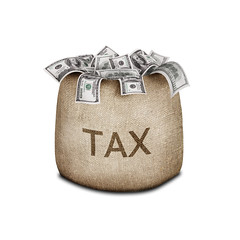The major accomplishment of
the American Taxpayer Relief Act, aside from keeping the country (and us!) from
falling off the "fiscal cliff," was that it made permanent most of
the tax laws
we've become used to following for the last 12 years.
What does this
mean for me?
I know, permanence doesn't
mean the same thing to Congress as it does to you, me and dictionary editors.
Officially, it simply means that we don't have to worry about tax breaks like
the $1,000 amount of the child tax credit expiring at a preset date.
Of course, the biggie from
this latest tax bill is that it keeps the lower tax rates first enacted under
the George W. Bush administration in place, aka, permanent.
 |
| Tax (Photo credit: 401(K) 2013) |
And it tacks on a new top
rate for wealthier folks.
But deciding what our 2013
and future taxes would look like was just one part of the process. We had to
wait for the Internal Revenue Service to figure out, based on inflation, just
how much of our earnings fall into these now permanent tax brackets.
Tah-dah! We now know.
The IRS has released the
remainder of the 2013 inflation adjustments, including this year's tax rates
and income brackets. Bankrate has published the complete information in a
spanking new 2013 tax rates table.
2013 tax rates
|
Single filers
|
Married filing jointly or qualifying widow/widower
|
Married filing separately
|
||
|
10%
|
Up
to $8,925
|
Up
to $17,850
|
Up
to $8,925
|
Up
to $12,750
|
|
15%
|
$8,926
- $36,250
|
$17,851
- $72,500
|
$8,926-
$36,250
|
$12,751
- $48,600
|
|
25%
|
$36,251
- $87,850
|
$72,501
- $146,400
|
$36,251
- $73,200
|
$48,601
- $125,450
|
|
28%
|
$87,851
- $183,250
|
$146,401
- $223,050
|
$73,201
- $111,525
|
$125,451
- $203,150
|
|
33%
|
$183,251
- $398,350
|
$223,051
- $398,350
|
$111,526
- $199,175
|
$203,151
- $398,350
|
|
35%
|
$398,351
- $400,000
|
$398,351
- $450,000
|
$199,176
- $225,000
|
$398,351
- $425,000
|
|
39.6%
|
$400,001
or more
|
$450,001
or more
|
$225,001
or more
|
$425,001
or more
|
What to expect
under the new brackets
The first $8,925 of your
income is taxed at 10 percent if you're a single taxpayer. A head-of-household
sees $12,750 of his income taxed at this lowest rate. Married couples filing a
joint return have $17,850 of their income taxed at 10 percent. If the tax bill
hadn't made this Bush-era rate permanent, all this money would have been taxed
at 15 percent, so there's a 5 percentage point savings.
On the much publicized
other end of the scale, which we all hope to one day reach even though we'll
complain about the taxes then, single taxpayers will pay a tax rate of 39.6
percent if they make more than $400,000. That top tax rate kicks in for a
head-of-household at $425,000 and a jointly filing couple at $450,000.
Now here comes the fun part
of the 2013 tax table.
If you're tax geeky like me
(and aren't you, since you're reading this blog?), you'll also notice that the
35 percent income bracket is tiny for single taxpayers. Only about $1,650
is covered in this filing status' tax bracket -- earnings from $398,351 to
$400,000.
The spread is larger for
head-of-household and married joint filers. Single taxpayers claiming
dependents will see $26,650 of their earnings taxed at 35 percent. The
penultimate tax rate will apply to $51,650 of a married couple's income.
But that $1,650 amount
could be a problem one day. Depending on inflation, a single filer could soon
see his or her income tax rate jump from 33 percent to the top 39.6 percent
rate.
This is one of those
frequent unintended consequences of hurried tax legislation. Don't be surprised
if Congress soon revisits the rate structure and we have another big Capitol
Hill fight over what to do about the incredibly shrinking 35 percent income tax
bracket.


No comments:
Post a Comment
I welcome your comments here :)